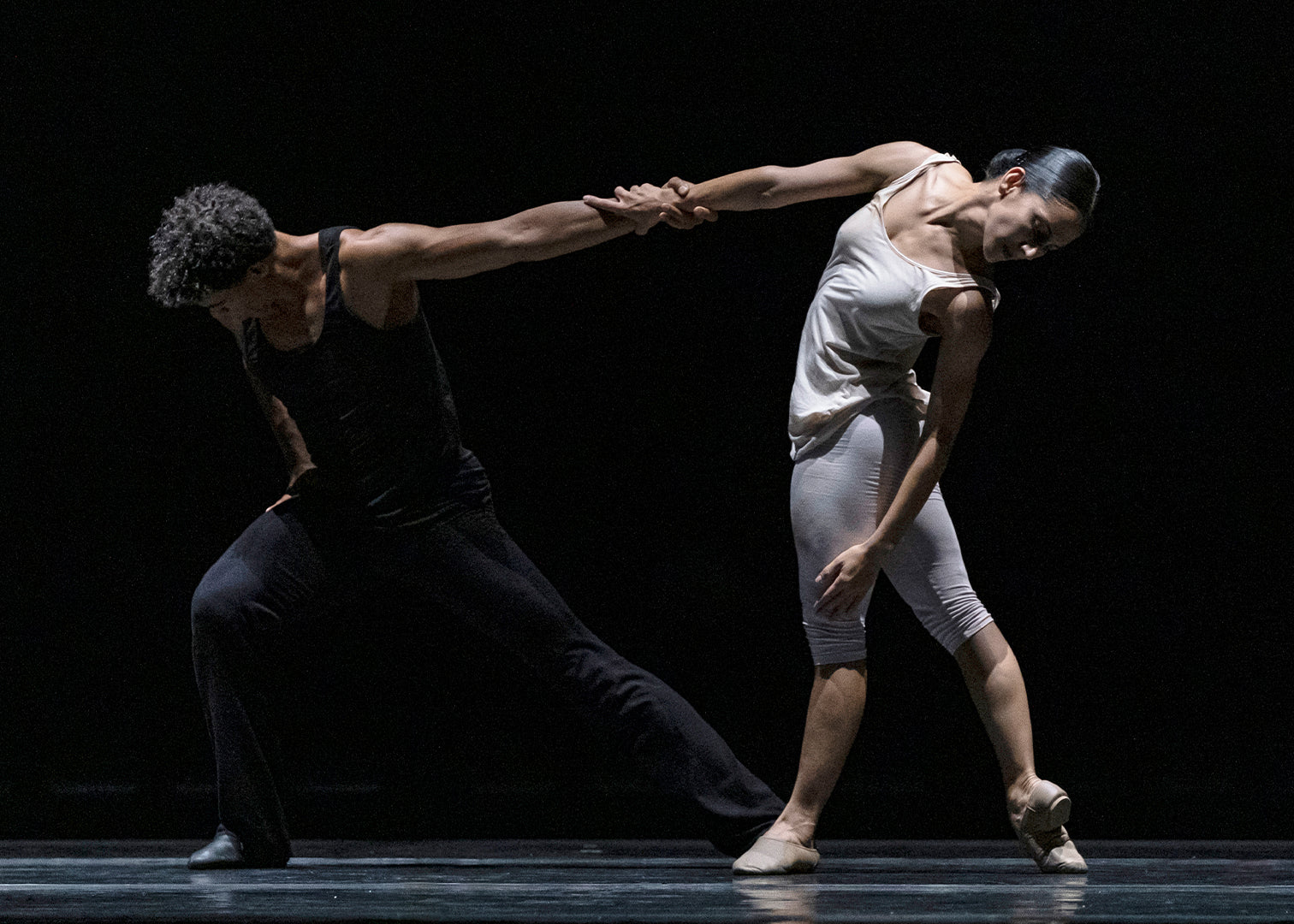What makes Peck’s ballets so watchable and so memorable is his brilliant, witty, and utterly original engagement of the corps de ballet. His ensemble choreography brims with invention, intricacy, youthful spirit, and surprise; in its own unique way, it reflects instincts and impulses, if not emotions, of the young generation. Peck seems to be able like no one else before him to harness the bright, unbound energy of his fellow dancers to enrich, enliven, and propel his works to irresistible effect.
However, in his new ballet, “The Decalogue,” which received its premiere in May as part of NYCB’s epic Here/Now festival, Peck’s choreographic ideas took a new, unexpected turn. Who knew that this young choreographer (he is about to turn 30) is capable of subtlety and restrain, of delicately calibrated and measured style of movement? In his new piece, Peck seemed to mellow and slow down. His elaborately-structured geometric designs are still there, but he applied them in a different kind of way: poetically, sensitively, with quiet grace. Intended or not, he emerged as a freer, more mature, sophisticated, and elegant stylist.
“The Decalogue” is what its title suggests—an intimate conversation among ten individuals or rather ten close friends. The ballet is set to original piano music by Peck’s frequent collaborator, Sufjan Stevens—his second commission for NYCB, the first being his score for Peck’s runaway hit “Everywhere We Go.” The music has a fragmented ten-part structure and feels melancholy in mood and impressionistic in style, full of shimmering textures and rippling passages: ten evanescent preludes of sorts, very Debussy-like.
The dancers are dressed in simple practice-like costumes (designed by Peck) of various shades of grey and beige. The ballet’s clean and spare look, coupled with the richly detailed choreography, strongly allude to a Balanchinean black-and-white aesthetic.
In “The Decalogue,” Peck forgoes the super-charged activity of his earlier pieces and instead zooms in and out on small groups of dancers, brining to sharp focus the unexpected beauty of stillness and simplicity. Still, there are gorgeous patterns, complex formations, and stunning images to admire, but they are less pronounced and clamorous, more measured and poised.
And wit and humor are also present here. In one moment, the dexterous Gonzalo Garcia circles around two couples in a series of flying leaps as they look at him with a sense of discernible admiration; yet when he suddenly disappears into the wings, their facial expressions go from awe to “oh, well.” In another moment, the dancers gently push each other forward thus creating a cascading human wave. There are plenty of moments like this, but they are subtle and brief—if you blink, you’ll miss it.
The partnering is another area, where Peck obtained a kind of spiritual maturity, demonstrating new simplicity and directness. In their pas de deux, with comes across as a casual conversation between a woman and a man, Sara Mearns and Jared Angle looked more like soul mates than romantic lovers, their dancing fluid, elegant, and expressive. The ballet abounds in such fleeting miniatures encounters for two, three, four or five dancers, all intriguing and intricately designed.
There is so much to take in on the first viewing, so many ideas to discern and analyze. One thing is certain, “The Decalogue” is a brand new and exciting chapter in Peck’s development as an artist and I look forward to seeing where he will take us next.
The rest of Program 8 was far less interesting. It began with the utterly dynamic but emotionally meaningless “Chiaroscuto,” from 1994, a sleek and frisky sextet by Lynne Taylor-Corbett set Baroque music by Francesco Geminiani (or rather his exploration of Arcangelo Corelli’s concerto grosso La Follia). Jorma Elo’s “Slice to Sharp” (2006) was another athletic exercise for eight dancers (and such excellent dancers I must say!) to another Baroque accompaniment, this time by von Biber and Vivaldi. The program’s middle section was devoted to Peter Martins’s 1998 “Stabat Mater,” a visually haunting but super melodramatic essay inspired by the music of Giovanni Battista Pergolesi of the same title. All these pieces left impression solely for the superb performances by NYCB’s dancers, who possess that super power to transcend and breathe a new life into limp and unremarkable choreography.









comments